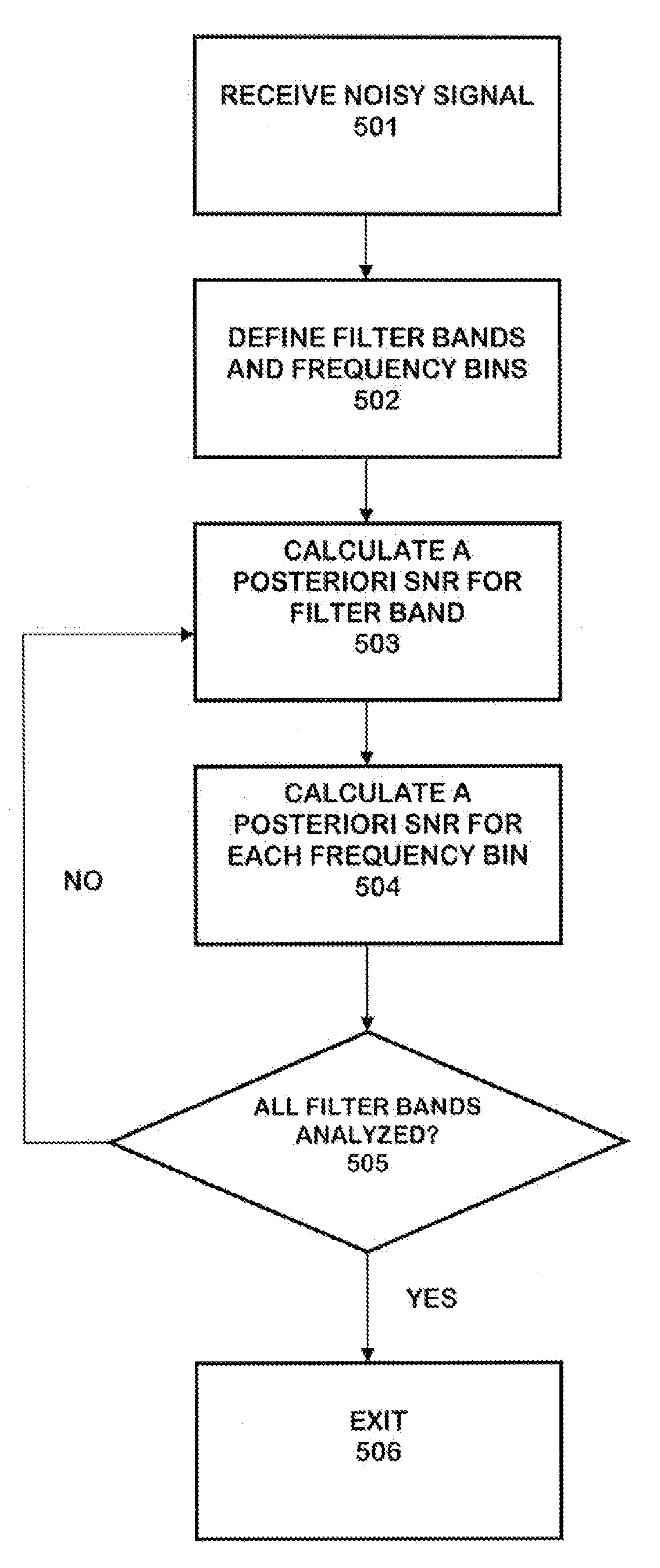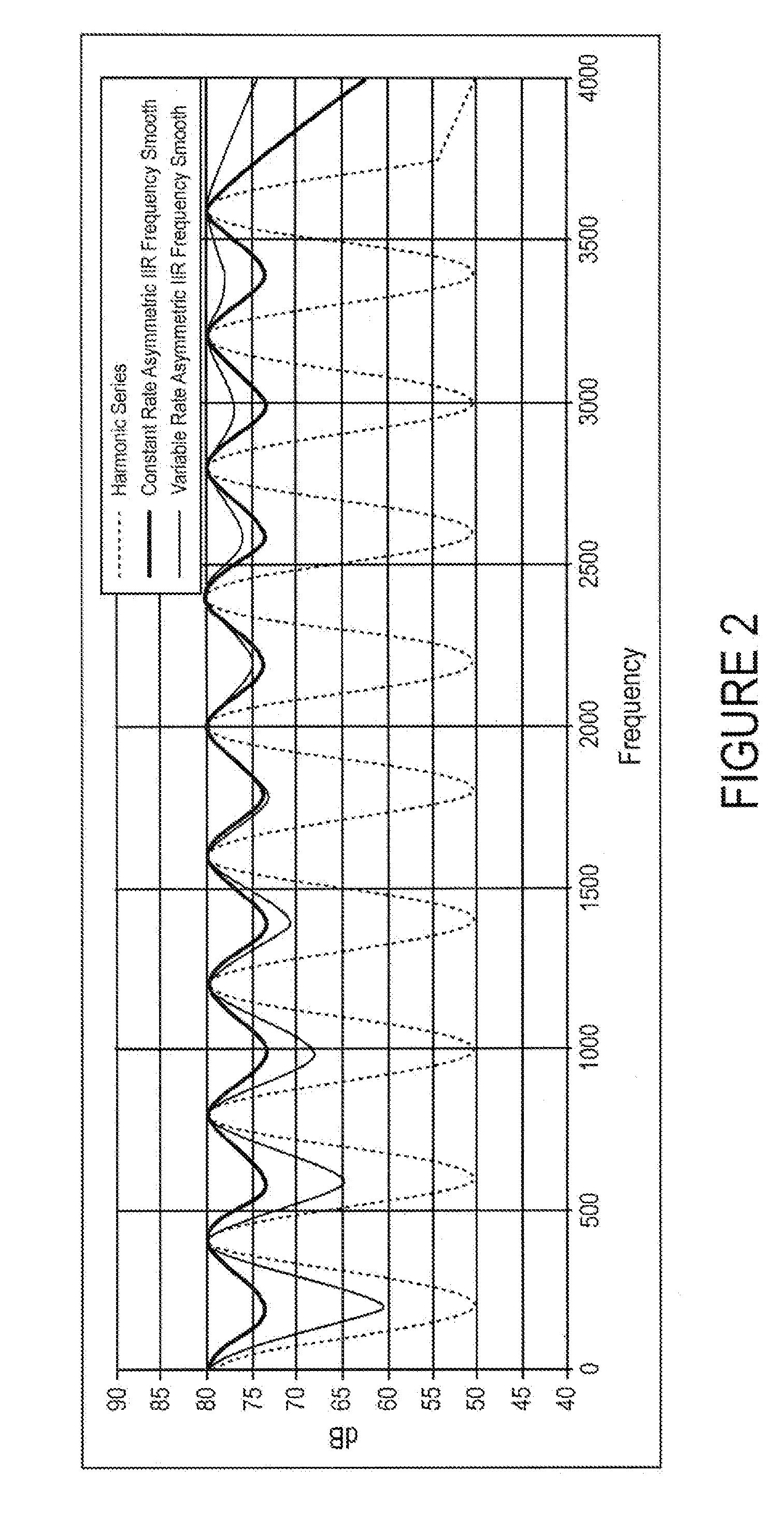Spectro-temporal varying approach for speech enhancement
a technology of spectro-temporal variation and speech enhancement, applied in the field of sound processing, can solve the problems of increasing the problem, increasing the difficulty of speech enhancement, and reducing the frequency resolution, so as to achieve less frequency resolution, improve the frequency resolution, and improve the effect of temporal resolution
- Summary
- Abstract
- Description
- Claims
- Application Information
AI Technical Summary
Benefits of technology
Problems solved by technology
Method used
Image
Examples
Embodiment Construction
[0033]The classic noise reduction methods use a uniform bandwidth filter bank and treats each band independently. This does not match with the human auditory filter bank where low frequencies tend to have narrower bandwidth (higher frequency resolution) and higher frequencies tend to have wider bandwidth (lower frequency resolution). In the present approach, we first modify the a posteriori SNR in general accordance with an auditory filter bank in two different ways by calculating the a posteriori SNR using a non-uniform filter bank and using an asymmetric IIR filter. The noisy signal is divided into filter bands where the filter bands at lower frequencies are narrower to coincide with the better frequency resolution of the human ear while the filter bands at higher frequencies are wider because of less frequency resolution of the human ear. Each filter sub-band is then broken up into a plurality of frequency bins. Using broader filter bands at the higher frequencies reduces process...
PUM
 Login to View More
Login to View More Abstract
Description
Claims
Application Information
 Login to View More
Login to View More - R&D
- Intellectual Property
- Life Sciences
- Materials
- Tech Scout
- Unparalleled Data Quality
- Higher Quality Content
- 60% Fewer Hallucinations
Browse by: Latest US Patents, China's latest patents, Technical Efficacy Thesaurus, Application Domain, Technology Topic, Popular Technical Reports.
© 2025 PatSnap. All rights reserved.Legal|Privacy policy|Modern Slavery Act Transparency Statement|Sitemap|About US| Contact US: help@patsnap.com



